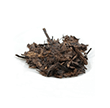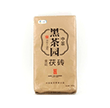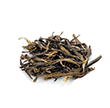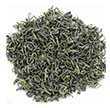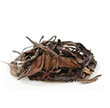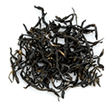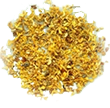About Types of Chinese Tea
About Black Tea (Known As Red Tea In China)
Until the invention of Black Tea in the mid 17th century (Late Ming/Early Qing Dynasty), the majority of tea consumed in China for 2,500 years had been green un-fermented and later, semi-fermented teas.

The story is that a passing army entered Fujian Province from Jianxi and camped at a tea factory in the Wuyi Mountain area. This held up tea production at the factory and after the army left, the leaves produced a tea with an unusual red colour. To recoup the losses from this delay, a farmer looked for a way to accelerate the drying time and save his order. Since the army used all the charcoal in the area which was usually used for drying green tea, he placed the leaves over a smoking fire of pine wood which caused a chemical reaction in the leaves and imparted a distinct smoky and fruity (Long An) flavor to the tea. Lapsang Souchong was born and led the way for the development of a whole family of teas which became very popular in China and a staple in the West - and helped to shape modern history in the process.
See About Black Tea for more information
About Green Tea
There are many legends as to the origins of tea, but somehow, somewhere in modern day China, some leaves from the Camellia sinensis plant ended up in some hot water, most likely in the Yunnan region of China about 3,000 years ago. From there, people throughout China simply collected and dried Camellia sinensis leaves and stored them until needed. What began as food became a medicine, then a regional beverage, then a royal prerogative, then a cultured ritual, then a trading commodity and finally a beverage for the masses.

By the 1st century BCE, the Emperor of the Qin Dynasty (221 - 206 BCE) unified China, consolidated the first stage of The Great Wall and built his tomb with the Terracotta Warriors standing guard. For the first time, tea leaves were being boiled without any other ingredients and tea was being enjoyed as a beverage in its own right, rather than as a medicine. It was during this time that word about tea spread throughout the Empire and became a much sought after commodity.
See About Green Tea for more information
About White Tea
White Tea is one of China's special treasures, made from the youngest and most tender hand-picked leaf tips and buds. These give a fresh and delicate flavour and a snowy/silver coloured brew from which White Tea gets its name. Because of the laborious and detail oriented process, it's also one of the most expensive teas produced.
White Tea is mainly produced in the Jianyang, Fuding and Songxi counties in Fujian Province. These hilly territories with their red and yellow mountain soils, year round mild climate and abundant rainfall (in Fuding for example, the average annual temperature is 18.5°C / 65.3°F and annual precipitation is about 1660 mm/65 inches), contribute to White Tea's unique character. Taiwan also produces a small amount of White Tea.
See About White Tea for more information
About Oolong Tea

In the family tree of Chinese teas, Oolong Tea which is semi-oxidized, lies between non-oxidized Green Tea and fully oxidized Black Tea (called Black Tea in the West but actually known as Red Tea in China). The range of oxidization varies from 8% to 70%. Oolong is sometimes written as Wulong but the meaning is the same: Oo (Wu) means Black and Long means Dragon. Oolong Tea is also known in China as "Qing Cha".
According to the growing and processing region, there are four major categories of Oolong Tea :
- Northern Fujian Province: Wu Yi Tea (also called Cliff Tea or Rock Tea)
- Southern Fujian Province: Tie Guan Yin (also called Chinese Oolong, Iron Buddha, Buddha of Mercy, Gun Yam)
- Guangdong Province: Phoenix Oolong (also called Dan Chong Tea)
- Taiwan: Tung Ting, High Mountain, Alishan, Baojung
See About Oolong Tea for more information
About Pu-Erh Tea

Pu-Erh tea (also known as aged or vintage tea) is another of China's great treasures and has only recently been discovered in the West. It is unlike any other tea in the world but Westerners can appreciate its similarities to fine wine, with which it shares many attributes.
Like the great wine regions of the world, Pu-Erh Tea production is highly regulated to ensure the highest quality and authenticity. By law, only aged tea that comes from Yunnan province can be called Pu-Erh tea.
The leaves are grown and harvested in counties along the Lancang River. Each estate produces its own special type of leaves, ranging from the tips and strong stems grown on estate cultivated plants to the highly prized large and soft, silver leaves picked from plants and trees that grow wild on the hillsides. Some trees are said to be over 1,000 years old. The leaves picked from these old trees are referred to as "wild arbor". The leaves are harvested and sent to Pu-Erh City where each manufacturer blends the leaves to make their own unique and time-honoured recipes. Paradoxically, in Yunnan in the past, compressed and aged Pu-Erh was seen as an export commodity, with locals preferring the younger green varieties but is now enjoyed there like other areas.
See About Pu-erh Tea for more information
 Top of Page
Top of Page

Ask The Tea Wizard
Don't know which tea is right for you? Answer a few questions and the Online Wizard will show you all the Chinese teas that suit your taste.


